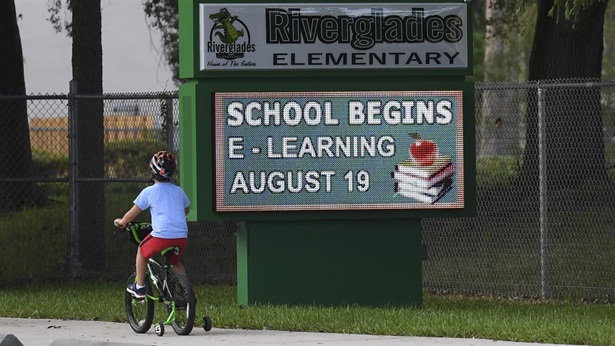Against Masking Our Children:Â My Experience With A Local School Board
By Richard Moss MD
“Fifteen days to flatten the curve,†the first of many COVID lies, has become nineteen months to flatten the country. Indeed, the collateral damage from the lockdowns and other devastations visited upon us by the regime have far exceeded the costs of the COVID virus itself. But in a largely secular nation, many of our countrymen have found a new religion, the religion of COVID. Like all religions, it has its sacraments. The COVID sacraments include the vaccine and the mask, and the docile worship of Anthony Fauci, the Grand Mufti of the Public Health establishment. Â
Masking, in general, is an abomination, but masking school children is particularly egregious. Given the ideologic challenges at the federal and, often, state level, it is at the local level where we may be most successful at exerting influence regarding COVID policies. It is through such grassroots activism that we may preserve our rapidly deteriorating nation or, at least, create safe zones or “sanctuaries.â€Â In the wake of the turmoil surrounding the Loudoun County (Virginia) school board and elsewhere, I, thus, share my experience with my local school board on the matter of masks.
I presented my case against masking school children before the school board on three occasions, in May, July, and September of 2021. In May, the governor of the state of Indiana (Eric Holcomb) had lifted the statewide mask mandate but not for schools. I called each of the members of the board and the superintendent in advance of the May meeting, urging them to lift the mask mandate for the school as well. At the meeting, I explained that school-age children were virtually invulnerable to COVID but the ones most traumatized and adversely affected by masks. By rights (and the “scienceâ€), if we were to lift the mask mandate in stages (I preferred lifting it completely), it should have been children first. The board though was unwilling to challenge the state, and the children remained masked until the end of the school year.
In July, the pandemic seemed to be ebbing. I spoke again before the board and urged them to prepare for the inevitable surges in COVID cases that would come later in the year. I asked them to resist the temptation to institute further mask mandates. I explained that we had never enacted such policies before COVID despite the many instances of infectious diseases far more deadly to children that have come and gone through the years. We should, I advised, reject masking children as a “new normal.â€Â Rather, we should return to the “old normal†and never mask again. The next surge, as it happened, would arrive not in months but weeks in the form of the “Delta variant.†Predictably, with the start of classes, they issued a mask mandate.
In September, I sent a letter (below) to each of the school board members in advance and spoke again at the meeting. The written statement was important because dozens of local doctors and nurse practitioners had sent a letter urging the school to – amazingly – mask the children. It was, therefore, vital to have a physician (myself) counter their arguments formally, in writing, and with references.  Â
Herewith, then, as an example of such efforts, my letter to a local school board against mandatory masking and in support of a voluntary mask policy.
Dear Board Members and Superintendent:
We have all experienced the calamity of the COVID pandemic over the last 18 months. Far more devastating, however, has been our reaction to it.1,2,3 The lockdowns, shutdowns, shelter-in-place, school closures, social distancing, quarantining, testing, contact tracing, and masking have had little effect on the trajectory of the virus but have exacted an enormous price on all of us while conferring no advantage. Variants have now arrived, and they, too, will continue to mutate and spread, no different than influenza. There will be no returning to zero-COVID. We must accept this and take science-based, targeted4,5 precautions without harming our economy, society, schools – and children. Indeed, the collateral damage, not of the virus but our reaction to it, has been far worse than the virus itself, a great self-inflicted wound.6,7
But of all the examples of unintended ruin that have occurred, perhaps the most egregious has been from the masking of children. We have known from the beginning of the pandemic that the at-risk populations are the elderly and the sick, specifically those with significant co-morbidities.8 If you are under 70 and healthy, you are relatively immune to COVID, with a recovery rate of 99.95%, greater than the flu for which we never undertook such excessive measures. For the 18 and under cohort, the risks are vanishingly small. A review of total deaths in children (under 18) in England following SARS-CoV-2 infection during the first pandemic year found a death rate in healthy children of 1 per 2 million cases. This cohort included 12 million children and showed an overall survival rate of 99.995%.9 While the Delta variant has been more contagious in all age groups, including under age 18, the severity in children remains unchanged.26 Â
Children are also not spreaders, particularly when asymptomatic. They are blessed with robust immune systems and are able to fight off the virus promptly. Teachers face no increased risk of COVID from students. Schools have not increased the spread of COVID.10 Â
The mask, further, confers no benefits. Neither for children nor adults. National Institute of Allergy and Infectious Disease (NIAID) director Dr. Anthony Fauci himself said as much in February of 2020 before reversing himself when it became politically expedient to do so.11 Other high-level members of the medical establishment pre-politicization of COVID have also criticized the use of masks: “‘Seriously people—STOP BUYING MASKS!’ So tweeted then–surgeon general Jerome Adams on February 29, 2020, adding, ‘They are NOT effective in preventing the general public from catching #Coronavirus.’ World Health Organization (WHO) Health Emergencies Program executive director Mike Ryan, on March 30, 2020, said that ‘there is no specific evidence to suggest that the wearing of masks… has any particular benefit.’â€12
Masks, including N95 respirators, do not prevent the spread of infection including bacteria and far smaller viral particles. The N95 label states clearly that the mask will not “eliminate the risk of contracting infection, illness or disease.â€13,14 Surgical masks and commonly used cloth masks, often worn for weeks, are utterly ineffective and can themselves be sources of cutaneous and respiratory infection, as they are frequently contaminated not just by viruses but bacteria, fungi, and parasites.15  Some contaminants are known pathogens including organisms causing pneumonia, TB, Lyme disease, food poisoning, meningitis, Staph infections, and others.21Â
Large randomized controlled studies conducted before the age of COVID, and before masking became politicized, showed no benefit of N95s over surgical masks in protecting against the flu. “Among outpatient health care personnel, N95 respirators vs medical masks… resulted in no significant difference in the incidence of laboratory-confirmed influenza.â€16 Medical masks are widely recognized as being ineffective in preventing the spread of viruses and so apparently are N95s. Â
In a review of fourteen randomly controlled studies12 that examined the effectiveness of masks in preventing the transmission of respiratory viruses, eleven suggested that masks are either useless or counterproductive. One randomized control study found that cloth masks allowed 97% of particles through, and may actually increase the infection risk.18Â
India had 81% mask compliance in February 2021 and cases soared 2966%. Cases peaked 2 weeks later and then went down. Two months into Israel’s reinstated mask mandate, cases are up 7970%.17,19,20 Masks had no effect on the transmission of the virus.
Masking children causes a host of other health problems. These include claustrophobia, increased heart rate, dizziness, headaches, nausea, stress, skin infections, sinusitis, reduced immune resilience, lack of empathy, and increased emotional stress. There have been increases in self-harm, substance abuse, depression, anxiety, obsessive-compulsive disorder, and tics.10,22,23,24,25
In summary, masks do nothing to prevent the spread of the virus in children or adults. They also have adverse effects and can themselves become contaminated and transmit deadly pathogens. Children remove, touch, and even trade masks. There is no reason to mask children – or anyone. Â
A voluntary mask policy may be appropriate given the level of misinformation and panic created by the media, medical establishment, and government, but never a forced mask mandate. Individual students may wear masks if they or their families choose. Other students should be able to attend school without masks. Based on the science and other valid reasons, I request that you end the mask mandate immediately. Please, stop masking our children! Â
Respectfully,
Richard Moss, MD
FOOTNOTE: Richard Moss, M.D., a surgeon practicing in Jasper, IN, was a candidate for Congress in 2016 and 2018. He has written “A Surgeon’s Odyssey†and “Matilda’s Triumph,†available on amazon.com. Contact him at richardmossmd.com or Richard Moss, M.D. on Facebook, YouTube, Rumble, Twitter, Parler, Gab, Getty, and Instagram.
City-County Observer posted this article without bias or editing.











